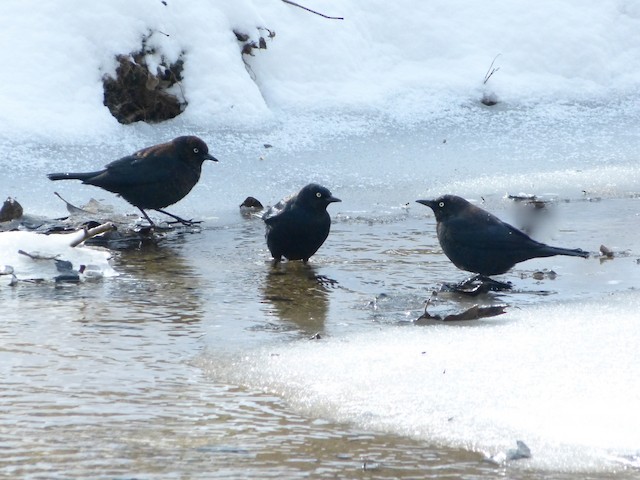Lake Matoaka is one of the main places in the City of Williamsburg to find waterfowl. The main portion of the lake is easily viewable where Jamestown Road crosses the dam. This portion is where the lake is widest, and in winter is often where groups of Lesser Scaup, Bufflehead, Pied-billed Grebes, and occasionally other species can be observed. However, Jamestown Road often gets high volumes of traffic, and stopping here is not advised. Matoaka can also be viewed from multiple points along the trails in College Woods. The dock behind the Keck Environmental Field Lab is another good point to view the lake, and is often where Gadwall, and Green-winged and Blue-winged Teal are found. Matoaka is also one of the last lakes in the area to remain open during freezing conditions. Under the right conditions, particularly when all but a small portion of the lake freezes, large concentrations and diversity of waterfowl can be seen here. Species such as Redhead, Common Merganser, Northern Shoveler and other difficult species in the City have been found under these conditions. The trails on the east side of Matoaka (or “Near Side,” as William & Mary students call it) can sometimes be productive for migrants, including the vegetation mats north of Keck, which occasionally attract Solitary Sandpipers, yellowlegs, and egrets. The area around the Keck Lab has also recently hosted probable breeding Prothonotary Warblers, a species that is not recorded on campus all years. For migrant passerines, however, the best area is the more extensive collection of trails west of the lake, or “Far Side.” These trails allow for deeper penetration into College Woods, and are an excellent place to find warblers, vireos, and flycatchers. The College Woods are also excellent for Catharus thrushes, and it is not uncommon to find good counts of all expected species on a day of spring birding. Far Side also hosts nesting Great Horned Owls most years.
Accessibility: The woods surrounding Lake Matoaka, on the campus of the College of William & Mary, contain over 10 miles of trails that were originally constructed by the Civilian Conservation Corps in the 1930s. The trails are generally well maintained, and a full trail map can be found on the William & Mary website linked above. However, the trails can occasionally become blocked by downed branches and there are some wet spots that may be difficult to pass after rain. The Matoaka Trails have a number of access points, including the Matoaka Amphitheater parking lot; the Keck Environmental Field Laboratory; the trailhead on Compton Drive; and the School of Education. Visitors should be advised that all access points are on the campus of William & Mary, and parking on campus is strictly enforced with violators subject to heavy fines. Parking in Faculty/Staff or Day Student spaces is free and available to anyone on Saturdays and Sundays. Anyone wishing to park on campus during the week should check in with Parking Services to purchase a day pass.
Owner/Manager: College of William & Mary
eBird Hotspot: Matoaka Lake & Woods
—Matt Anthony

